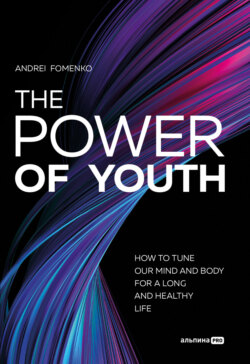Читать книгу The Power Of Youth. How To Tune Our Mind And Body For A Long And Healthy Life - Андрей Фоменко - Страница 4
CHAPTER 1
AGING AND YOUTH
WHAT BODY CHANGES ARE CAUSED DUE TO AGING?
ОглавлениеAs a person grows older, their appearance, health, and the function of most organs change. The set of these metamorphoses, which manifest both externally and internally, is called aging. Here are some signs characteristic of aging.
● Hearing impairment: children can hear high-frequency sounds (above 20 Hz) – this ability is usually lost by the end of adolescence. After age 75, more than half of older adults hearing gets worse so much that it prevents normal communication.
● Vision problems: after the age of 35, the tone of the ciliary muscle, responsible for accommodation[3] (change in the curvature of the lens) decreases. As a result, farsightedness (presbyopia) develops and progresses after the age of 40 – a deterioration in the ability to see near objects. In addition, over the years, the risk of cataracts (clouding of the lens) increases.
● Change in skin tone: due to lower production of hyaluronic acid, collagen, and elastin fibers over the years, the skin loses elasticity, which leads to wrinkles.
● Over the years, the function of cells producing melanin, the substance that determines hair color, suffers, and graying comes with this process. In addition, as we age, our hair begins to fall out more actively, and the risk of alopecia (hair loss) increases.
● As we age, we lose muscle mass and strength, and muscle's ability to regenerate deteriorates.
● After the age of 25, fertility (ability to conceive) in women starts to decline. At the age of 44 to 55 years, (there can be deviations in either direction) menopause occurs, and loss of the ability to childbirth. Men's sexual function also deteriorates over the years, increases the risk of erectile dysfunction, and decreases the fecundating ability.
● Cognitive function often deteriorates over the years: learning and memory deficit, the risk of dementia, including Alzheimer's and Parkinson's disease, increases.
● There is a higher risk for several diseases: osteoporosis (brittleness of the bones), osteoarthrosis, atherosclerosis, hypertension, obesity, diabetes, coronary heart disease, cerebrovascular disease, cancer, immune deficiency, etc.
In addition to symptoms of aging, changes at the cellular and molecular levels develop with age, and it has an impact on our bodies. Scientists from the Department of Biochemistry and Molecular Biology at the University of Oviedo (Spain) state that aging is based on the following biological processes[4].
● Accumulation of mutations in cells (genomic instability), which increases the risk of developing diseases and malignant tumors.
● Shortening of telomeres, end sections of chromosomes, that protect genetic material from damage. It also causes errors in the genome, protein production, and dysfunction of cell and organ function.
● Accumulation of so-called senescent cells, incapable of division or apoptosis (planned cell death leading to tissue renewal). Such cells do not die, but partially or completely lose their functions, leading to organ malfunction.
● Decreased sensitivity of cells to "positive" growth factors, and hormones, activating energy exchange in cells, which stimulate regeneration. At the same time, the sensitivity of cells to the action of damaging factors, such as radiation, toxic substances, antibiotics, etc., increases with age.
● Depletion of stem cells, which are "samples" for functional cells of various organs.
● Deterioration of intercellular communication, signaling between cells, which ensures a coordinated work of the body.
There is such a concept as biomarkers of aging – a set of physiological and biochemical indicators, that allow us to judge the biological age of a person. A table listing the basic biomarkers of aging is given at the end of the chapter.
3
Accommodation of the eye is its ability to focus on objects at different distances by changing the refractive properties of the lens. – Ed. note.
4
López-Otín C., Blasco M. A., Partridge L., Serrano M., Kroemer G. The hallmarks of aging. Cell. 2013 Jun 6;153(6):1194-217. doi:10.1016/j.cell.2013.05.039. PMID: 23746838; PMCID: PMC3836174.
